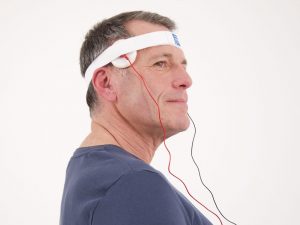The mental health industry has been prescribing pills to patients struggling with depression, anxiety, and insomnia for decades. Many of these medications come with high costs and side effects, but Fisher Wallace Laboratories is hoping to change this with its new wearable technology.
The company has developed a wearable brain stimulator that delivers pulsed electrical currents that aid in the production of the mood stabilizing hormone serotonin. It can also help to lower the stress hormone cortisol.
The pocket-sized device runs on two AA batteries and can be worn when resting or carrying out everyday activities. In order to treat depression and anxiety, patients can wear the device for 20 minutes per day. To treat insomnia, the stimulator can be worn within two hours before sleeping.
Fisher Wallace has recently raised millions in equity crowdfunding through the platform StartEngine in hopes of shifting the mental health industry. Now, the Food and Drug Administration has cleared the device, as it has nearly no side effects.
The company has used $2 million to fund three clinical trials and the results have been submitted to the FDA in anticipation of a new FDA approval and re-clearance for treating Major Depressive Disorder (MDD), Generalized Anxiety Disorder (GAD), and insomnia.
Recent trials have proven the Fisher Wallace Stimulator® to be effective in treating symptoms including fatigue, helplessness, loss of interest in activities, panic attacks, and many other common MDD, GAD, and insomnia symptoms. The device can also treat many different types of insomnia including Chronic Insomnia, Onset Insomnia, Comorbid Insomnia, Maintenance Insomnia, and Acute Insomnia.
The device is also available at an opportune time as according to CEO of Fisher Wallace, Kelly Roman, “The impact of the pandemic on mental health touched far more patients than the virus itself. The rates of depression and anxiety in US adults have more than tripled, according to the CDC.”
Fisher Wallace is working to normalize brain stimulation technology and put drug therapies on the back burner by offering a cheaper and less risky alternative to traditional medications.























